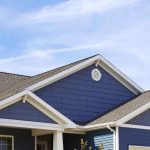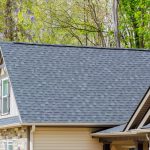It is not unusual for clients to ask their contractor to turn the attic above a garage into a finished room. This bonus room can actually be a cozy addition to a home’s living space – when done right, that is. Done wrong, however, can make that room uncomfortable, either too cold or too hot.
The trick is that a bit more attention should be given on the room’s knee walls. One must understand that insulation will perform the way it should only when it is totally encapsulated – covered on all six sides and touching all of those six surfaces.
Often, however, that is not the case in room additions. Many walls lack a bottom or top plate, so in most cases, the insulation is exposed on the side facing the unconditioned garage or attic space. The lack of backing in that area makes it easy for the insulation to pull away from the drywall, leaving a gap between the drywall and the insulation. The lack of plates then allows the air in the gap to circulate freely between the space and the insulation.
With air circulation, insulation works like a blanket. In order for it to provide warmth, it has to be in contact with the surface it is supposed to be insulating. For instance, a blanket will keep you warm if it is touching your skin, but if you hold it away from your skin, then cool air can move into that space.
The same principle applies when insulation pulls away from the drywall. The air in the gap will most likely have the same temperature as the air in the attic because drywall has no practical insulation value.
During winter, warmed air will rise up through the space between the drywall and the insulation and it will escape over gaps at the top of the insulation, drawing in cold air through gaps at the bottom of the insulation while carrying away most of the room’s heat. During summer, airflow through that space will also make the insulation less effective.
The backing material should also be considered carefully because it raises the wall’s tolerance as it acts as another block to airflow, in the event that the insulation job done is imperfect. In fact, the Energy Star program considers backing to be so important that builders who want their homes certified should put a backing on all insulated knee walls to ensure that the insulation is encapsulated on all sides.





